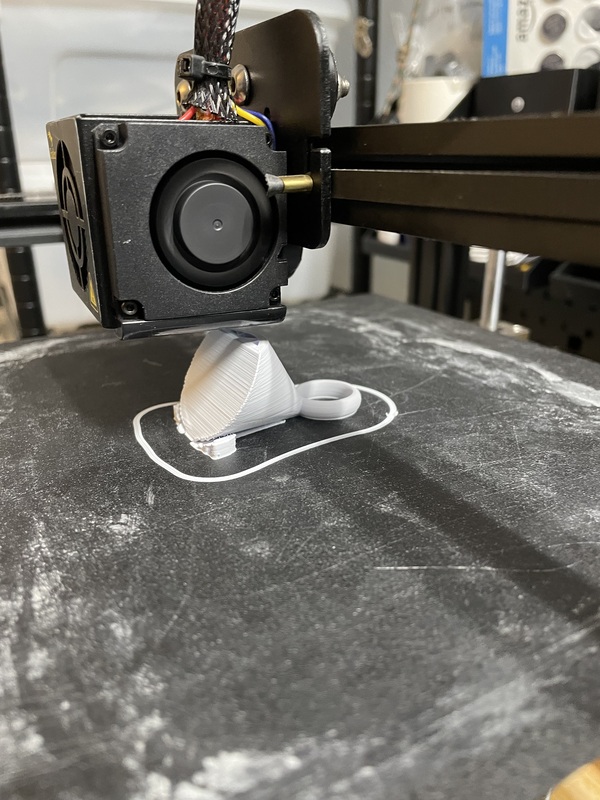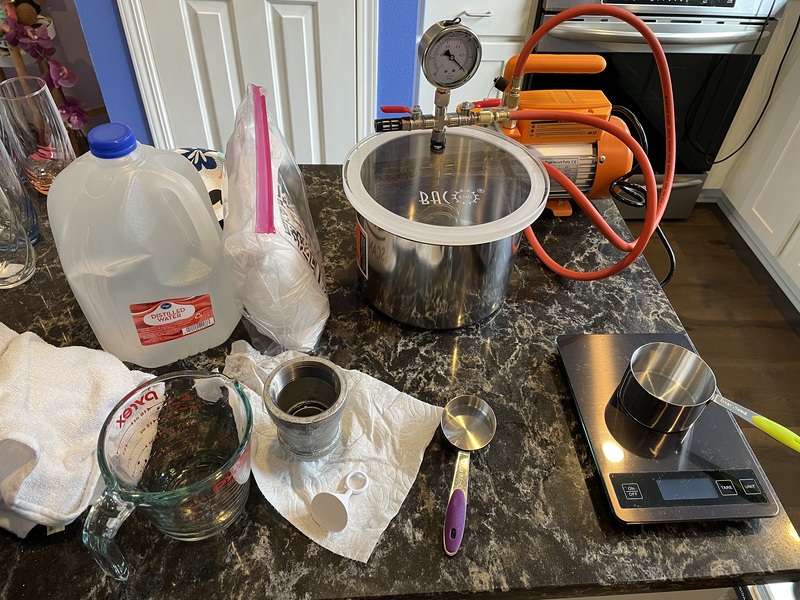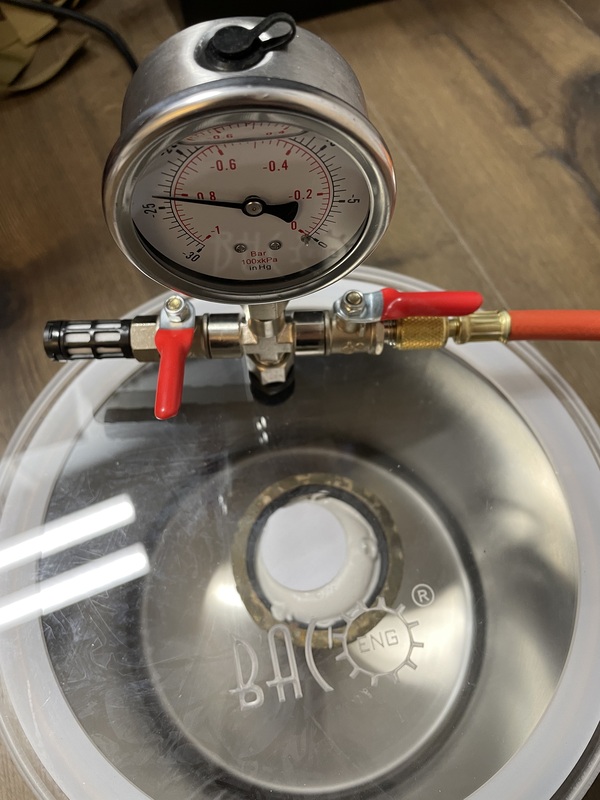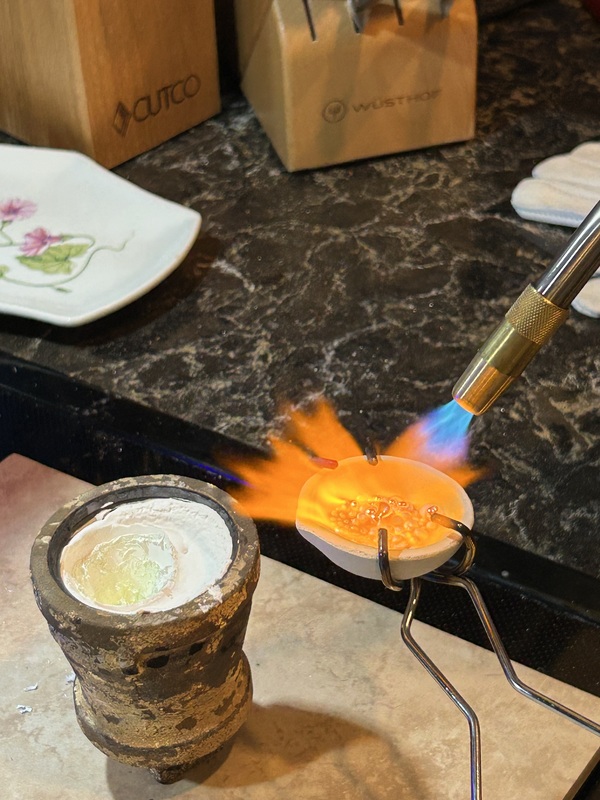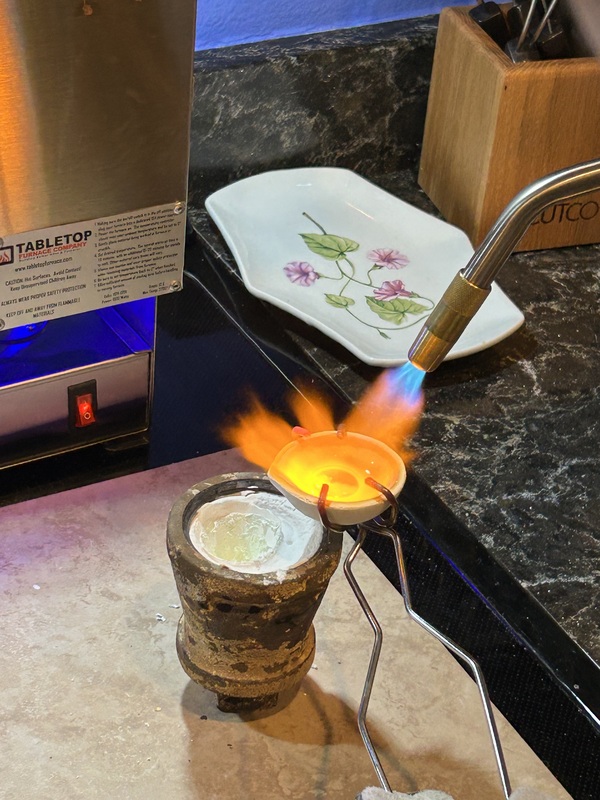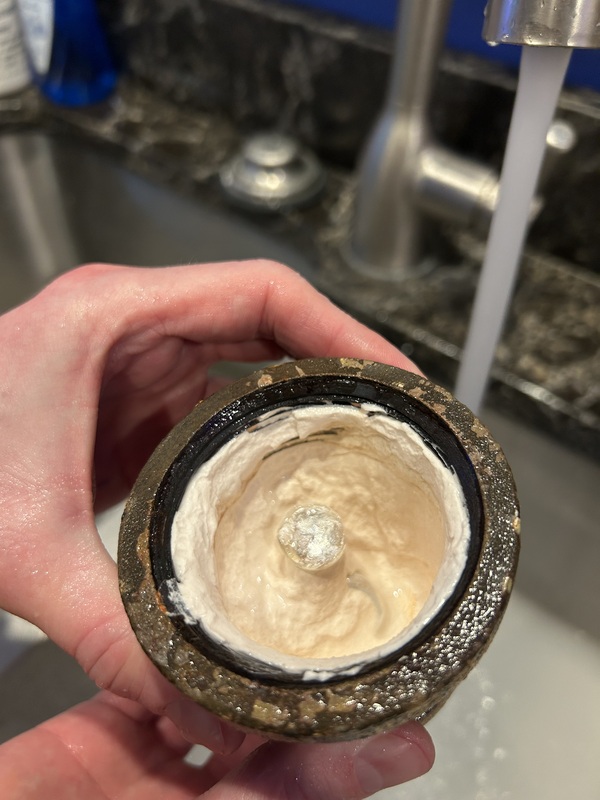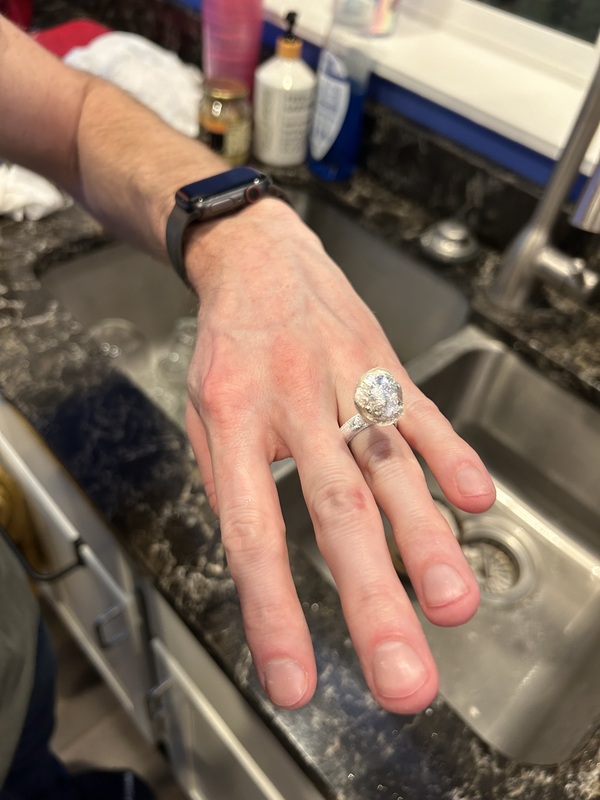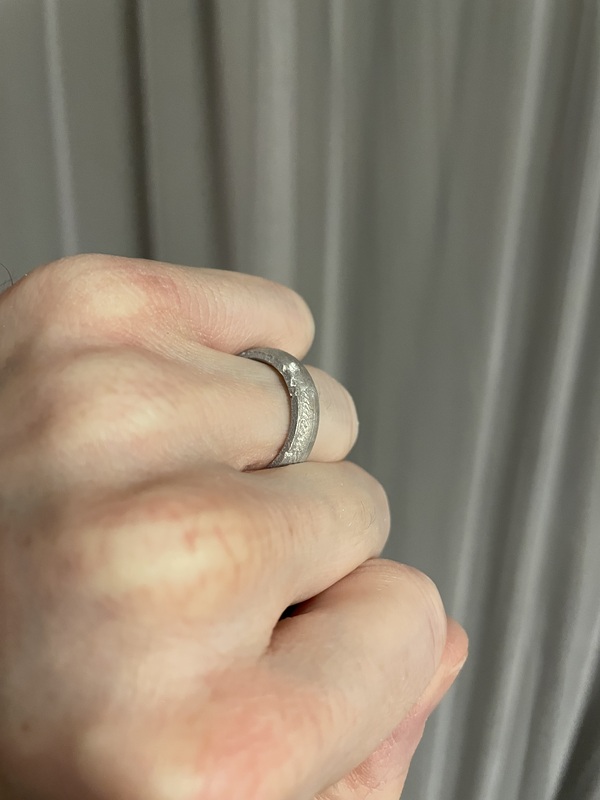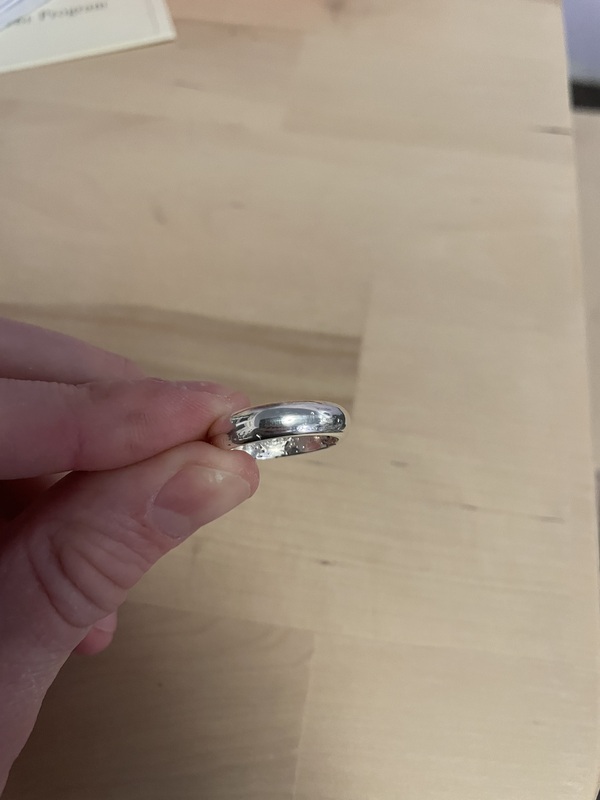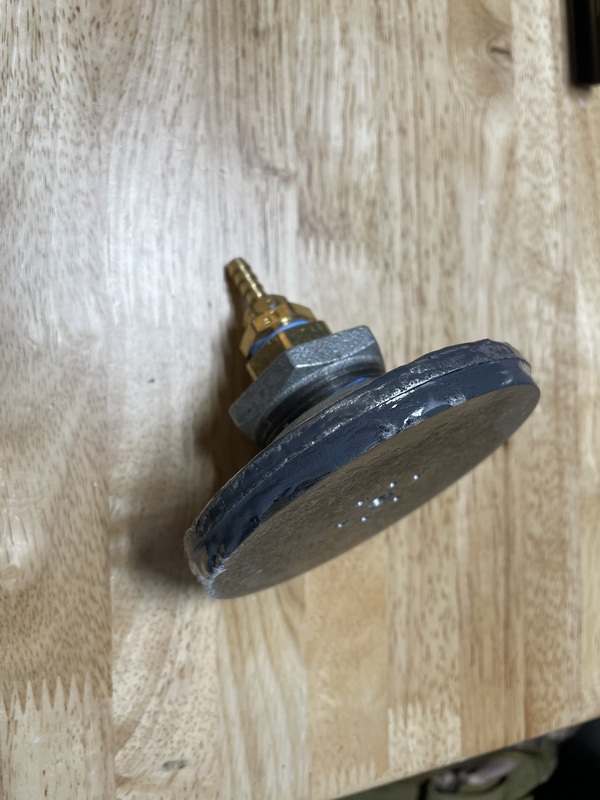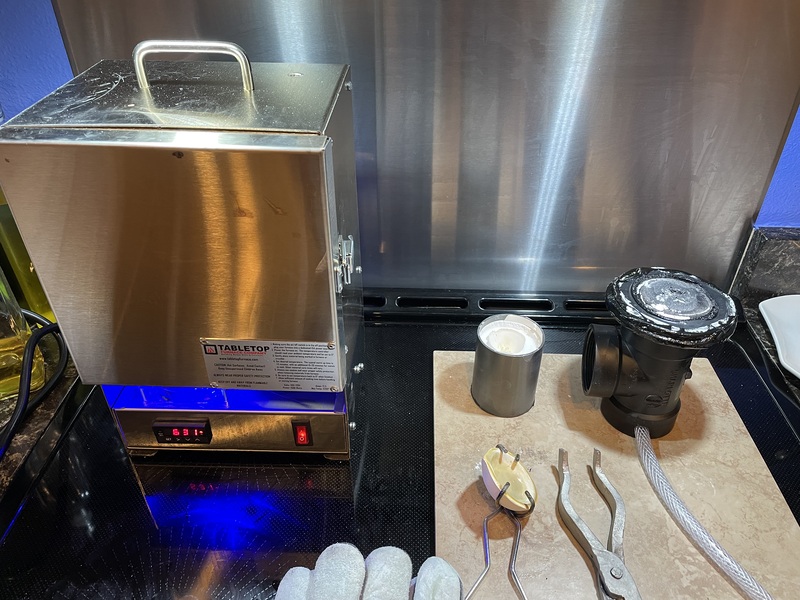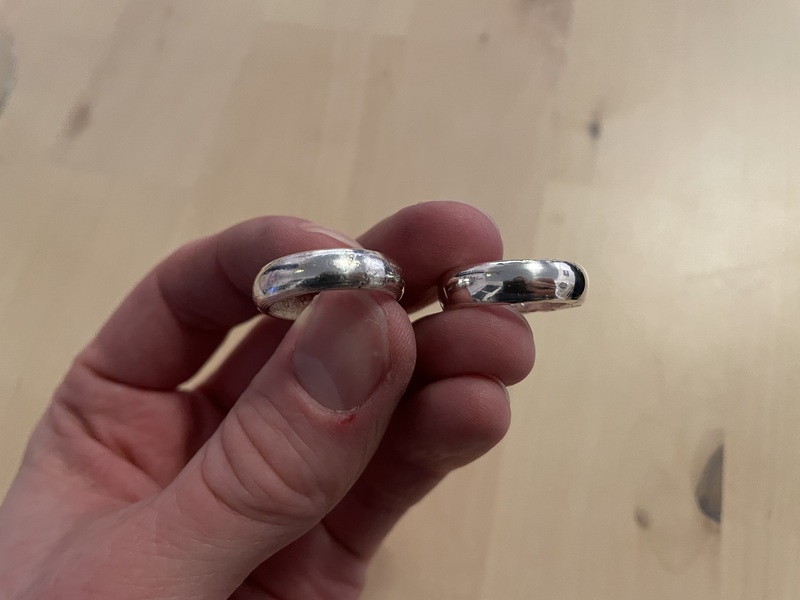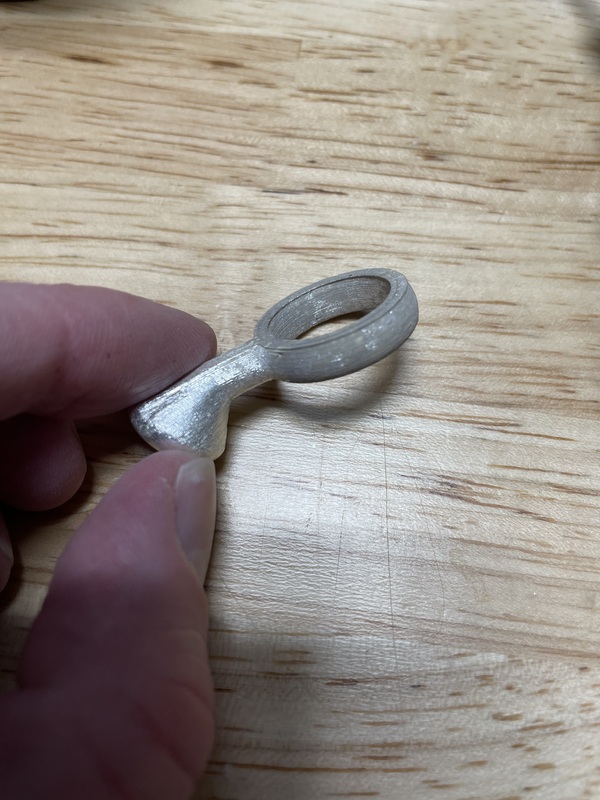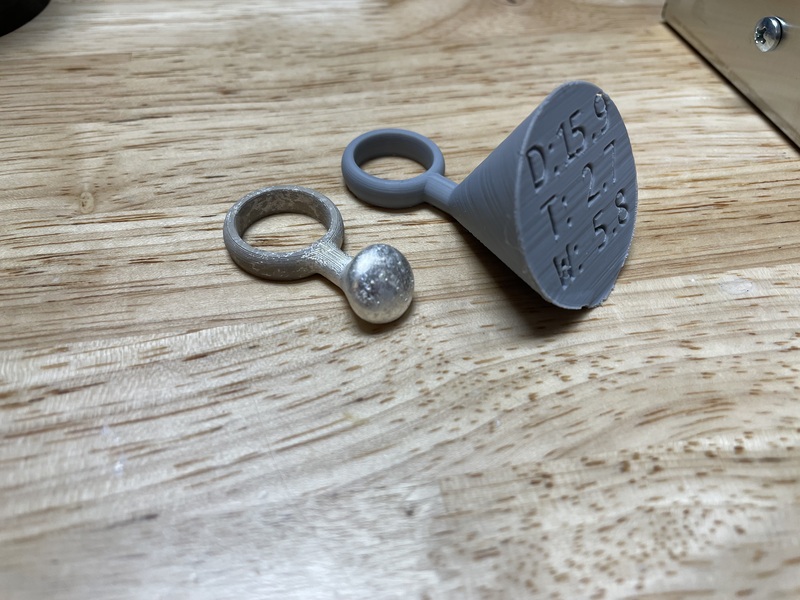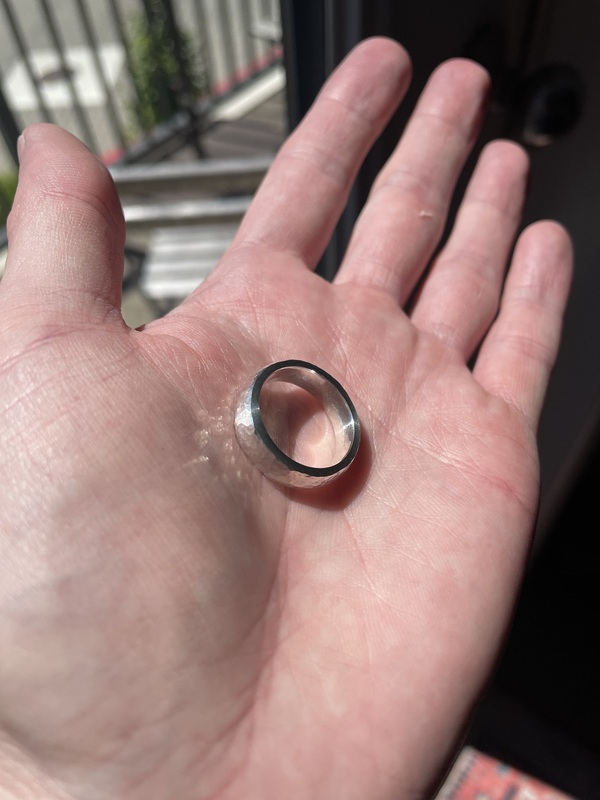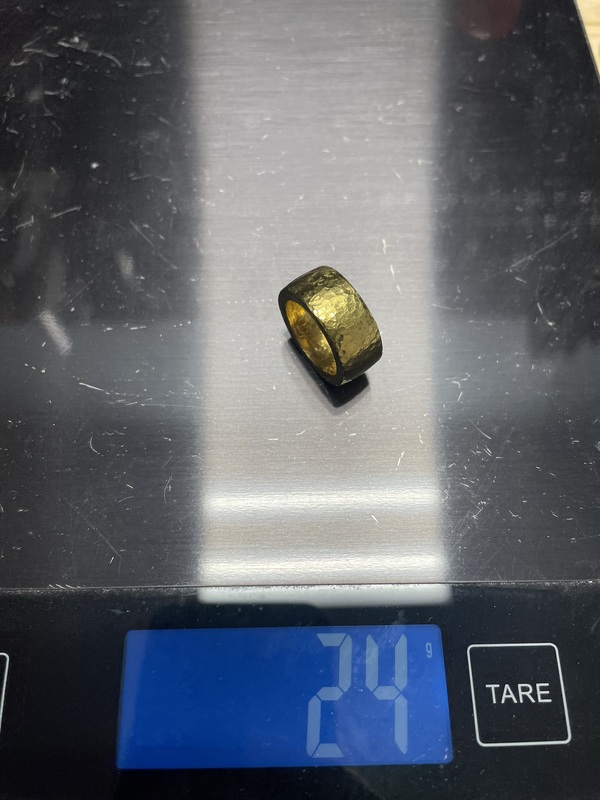I’m getting married pretty soon, and I figured it’d be fun to make my own rings. I’d seen a Nile Red video where he made purple gold, and the process seemed simple enough: Make a mold, pour some molten metal into it, and voila you have metal in the shape of the mold. It turns out that the devil is in the details.
Since I wanted the ring to fit my finger precisely, and I wanted it to be pure gold, I figured that lost PLA casting was my best bet. The process is similar to lost wax casting, but starts with a 3D printed part instead of a wax form. I’d 3D print the ring I wanted, make a plaster mold of it, heat up the mold until the plastic melted/vaporized away, then pour molten metal into the mold. After it cooled I’d rinse away the plaster, then cut off the excess metal and polish the ring.
I had a 3D printer, but none of the other necessary equipment. I bought:
- Investment plaster
- Some cast iron pipe to use as a flask
- A vacuum pump and chamber (for getting bubbles out of the liquid plaster)
- A small electric kiln for burning out the mold
- A handheld torch for melting the metal
- A crucible
- Borax
- Tongs
- 5 ounces of fine silver (because gold is expensive)
The plan was simple:
- 3d print the desired shape.
- Make a plaster mold.
- Heat up the mold in the kiln, curing the plaster and burning/vaporizing the plastic.
- Coat the crucible with borax, then torch the metal in the crucible until it’s melted.
- Take the out the mold and pour the molten metal in.
- Wash away the plaster.
If the trial run worked, the plan was to buy some gold and repeat the process. Jewelry made of pure silver or gold is rare because the un-alloyed metals are very soft, causing them to scratch or deform easily. I thought it was worth the tradeoff since I wouldn’t have to worry about oxides when melting the metal. Also pure silver/gold looks unique. Pure silver is the most reflective metal, and pure gold has a deeper color than lower karat gold used in most jewerly.
The First Test
I didn’t have much trouble following my plan:
This was the result:
After polishing, it looked like this:
It was promising, but it had quite a few defects. No amount of polishing could fix them, as they permeated the casting. I searched around and discovered two important facts: First, although molten silver doesn’t react with oxygen, it does dissolve oxygen from the atmosphere. Right before the silver solidifies, it spits out the oxygen and forms bubbles, ruining the cast. Second, pure metals have a melting/freezing point, while alloys have a melting range. A metal that freezes more quickly has a harder time filling in all the tiny details in the mold.
Armed with this new knowledge, I changed my plan in two ways. First, I’d make an alloy of 90% silver and 10% gold. Second, I’d build a contraption to hook up my vacuum pump to the flask. This would suck oxygen out of the molten metal and help force the metal into every crevice of the mold.
Testing: Alloyed silver + Vacuum Casting
I went to the hardware store and grabbed some parts to construct a vacuum base for the flask. I drilled a few holes in a steel plate, then used some JB weld to attach the plate to some fittings. I used a piece of ABS pipe as support. A hose connected it to my vacuum pump. I ordered a 2 inch diameter steel tube to use as a flask, as the cast iron had no bottom opening and had degraded from the heat. I found out later that cast iron is coated in zinc, so it was a terrible idea to use it as a flask. I could have given myself metal fume fever.
I also put some rubber on the steel plate to help get a seal.
When I put the flask on the rubber, the rubber melted and smoked, failing to get a seal around the flask.
As you can see, the result wasn’t much better than my first test.
Testing Again
For my next attempt, I replaced the rubber with some silicone rubber. Silicone rubber is much more resilient to high temperatures. I would have used it earlier, but the black rubber was the only thing I could find at the hardware store. I also JB welded some metal tubing to replace the janky ABS pipe support.
In this test, the mold had cooled significantly before I poured the metal in. Also I think the metal wasn’t hot enough and froze before it could fill all the details in the mold. The quality of the casting was better, but still not good enough. The ring on the right is the new one. The one on the left is from the previous attempt.
Polishing makes these rings look better than they really are. The inside of the ring still had quite a few defects, causing it to look bad when not on a finger. Also the irregularities made wearing it distracting.
It was around this point that I realized that I liked the look of the silver more than gold. Yes, gold is expensive and rare, but it’s not as shiny. And these rings are for our benefit, not everyone else’s.
Yet Another Attempt
The only changes I made on this attempt were to remove the flask at the last minute and to spend more time heating the metal.
It turned out perfect. You can see the layer lines from the 3D print. After cutting off the excess, I sanded, polished, and hammered it. (My fiancee preferred the faceted look of a hammered surface to a smooth polished surface.)
There are still some layer lines visible in this image as I wasn’t quite done hammering and polishing it. I like the effect, but it’s not as shiny.
The perspective makes it look like the ring is too big to fit on a finger, but it fits perfectly. I think only a professional jeweler could tell that this was made by a hobbyist.
Conclusion
This was a tough but rewarding project. Until the final attempt, I was worried that I’d never be able to make a decent ring. But I knew that jewelers are not magicians. Whatever they’re doing, I could reproduce. I just needed to understand enough of the chemistry and physics involved.
The final product was exactly what I wanted. Because it’s a casting, the core is soft and malleable, meaning it won’t shatter if dropped. But since the outer surface is work hardened from hammering, it’s less likely to collect scratches. Also I can re-hammer it to remove any scratches. Since the rings are made entirely of noble metals, they’ll never corrode. The trace amounts of sulfur compounds in the atmosphere will tarnish the silver eventually, but a small amount of polishing will fix that.
In total, this project took me six weekends over three months and cost around $3,500. Most of that was the ounce of gold I bought ($2,300). The equipment was a little under $1,000 and the 5 ounces of silver ran me $125. I could have ordered a sterling silver ring for $100, or I could have worked with a jeweler to fabricate two rings of the desired style and alloy, but it wouldn’t have been the same. Our rings have a story.
Knowing what I know now, I probably could have made these rings without casting. I could have heated up the metal, hammered it into shape, reheated to undo the work hardening, and repeated that process until I had the ring I desired. In fact I did so with the extra gold:
It’s ridiculously ostentatious, but it is kinda cool. Also gold is 1.7x the density of silver or lead, so it makes a very rewarding sound when knocked against anything.
That said, I’m glad I made these rings the way I did. They’re totally unique. Nobody makes jewelry like this, because gold is so much more expensive than silver. It’s far more cost effective to alloy the silver with copper. But such alloys tarnish more quickly and are less reflective.
And paying someone else for rings wouldn’t be as cool, or as romantic. Every time we look at our rings, we’re reminded of how much of our own efforts went into them. I’m reminded of the initial idea and thinking, “How hard could it be?” I’m reminded of the trial and error, the mistakes, the frustrations, the determination to keep working through problems, and the eventual beautiful success.
Hmm. That almost sounds like a relationship.
I’d like to thank James Binnion for publishing so much useful information about jewelry casting. In addition to his countless forum posts helping others, he published a very informative paper about casting defects in 3D printed resin. Without him, I would have had a much harder time accomplishing this.
